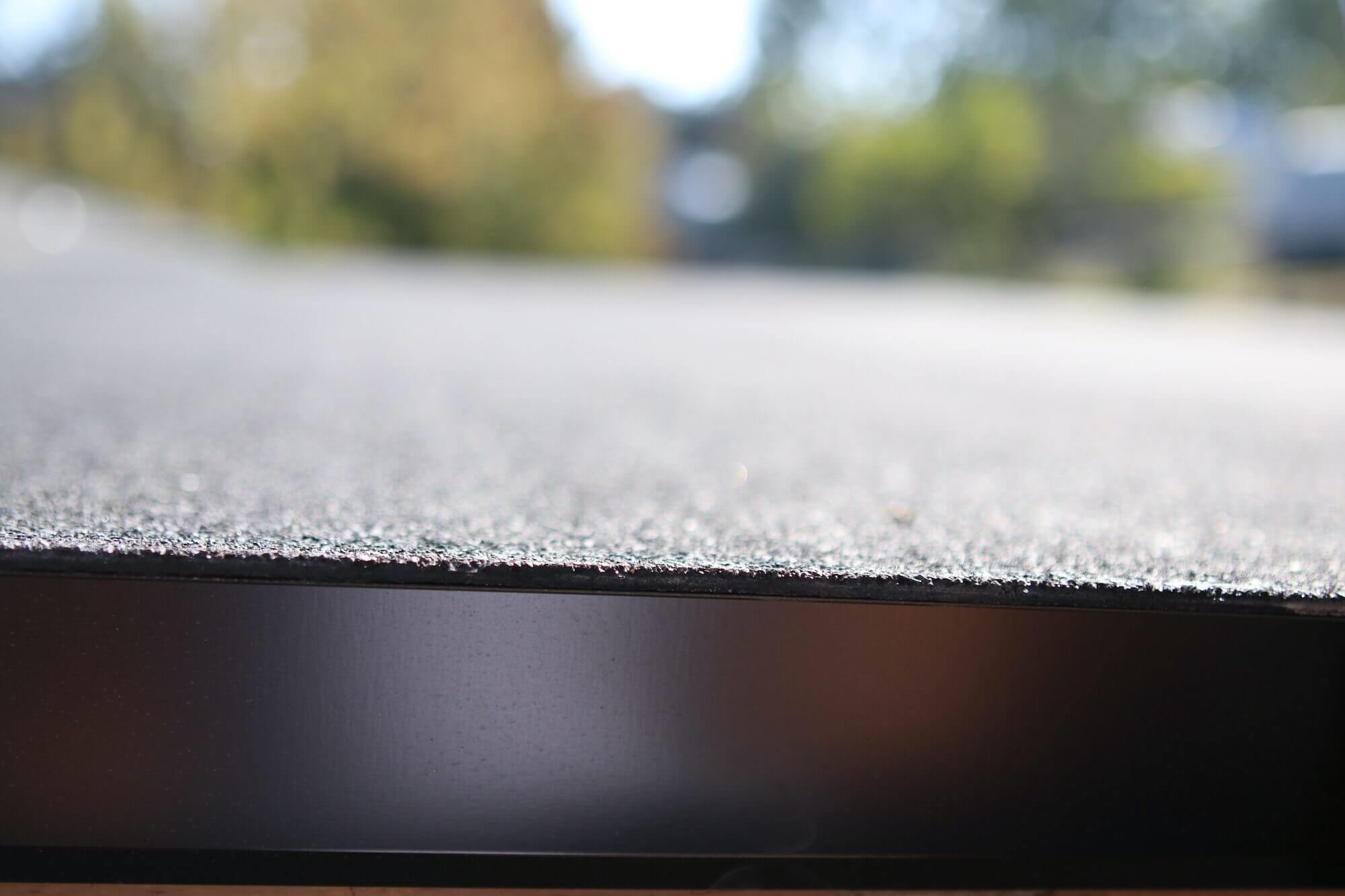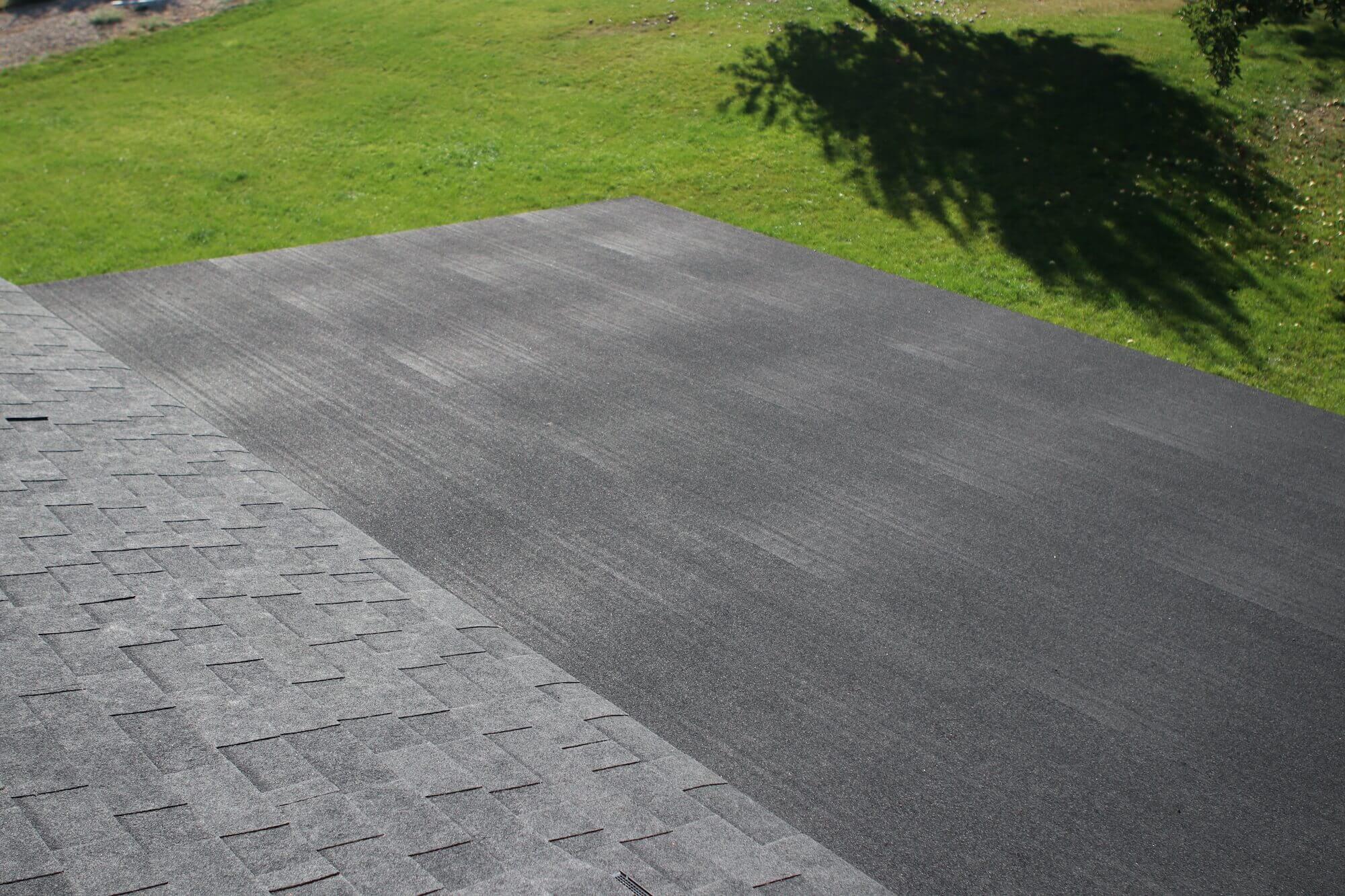Is Rolled roofing an option for your roof or covered patio?
What is Rolled Roofing?
Residential rolled roofing is made of similar, if not the same materials as architectural shingles but is made into 75 to 100 square foot rolls with a self-adhering backing. This allows for a fastener free installation. Most manufacturers make rolled roofing in the same colors as their architectural shingles so that you can match one part of your roof to another part that might require the installation of rolled roofing.
Should your covered patio or roof be covered in rolled roofing?

Rolled roofing is made for a specific application, low slope, or flat roofing. In a residential application, this is most common over a patio, especially one that was added after the home was built. It is typical to see a home with a 4/12 pitch roof and a patio that was added later with a pitch of 2/12 or lower. This is exactly where rolled roofing comes in. You see, the pitch of a roof rarely gets any attention, but it has a lot to do with the waterproofing performance of a roof and is what moves the water off the roof. In the situation of low slope roofing in the 2/12 or 1/12 range, a shingle will not perform optimally because of the time water has to find its way through seams or nails and penetrate the roof causing a leak.
How does Rolled roofing work?

Rolled roofing is a continuous smooth membrane that is installed one row at a time moving from the eave up, each row overlapping the previous. The entire back of the product is incredibly sticky causing an almost instant bond with the material beneath it. There are no nails used and no butted seams to potentially leak. The lack of fasteners, the continuous nature, and the method of installation is what makes rolled roofing the choice for low or flat slope roofing and usually is required by code.
